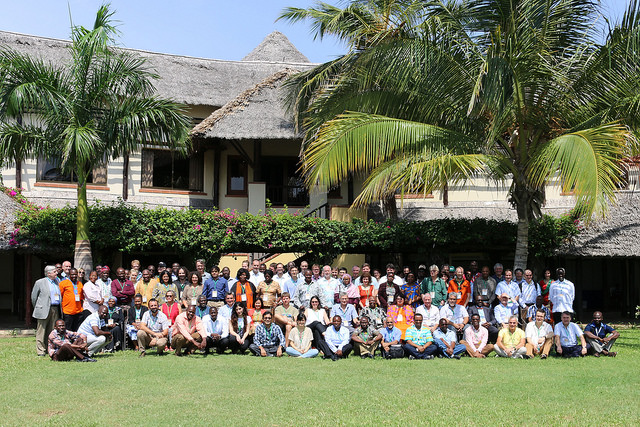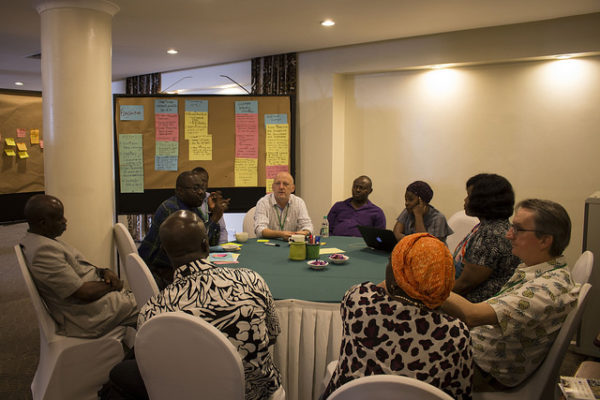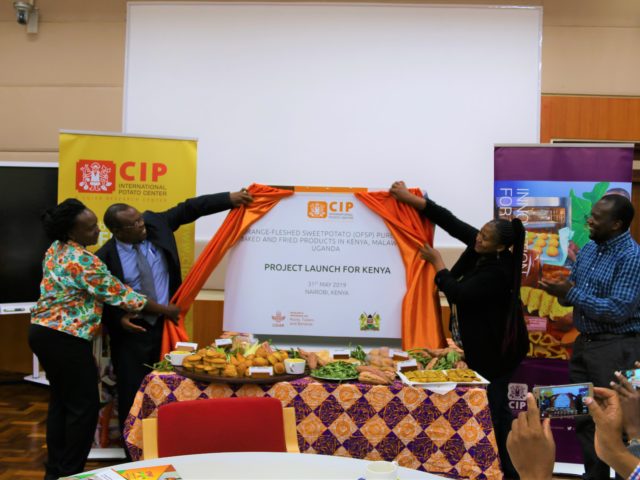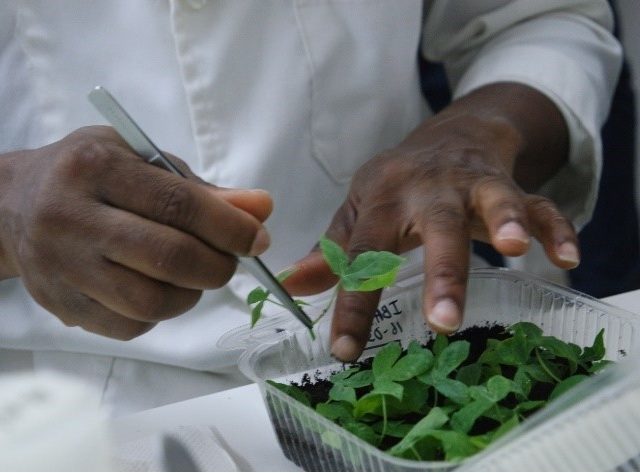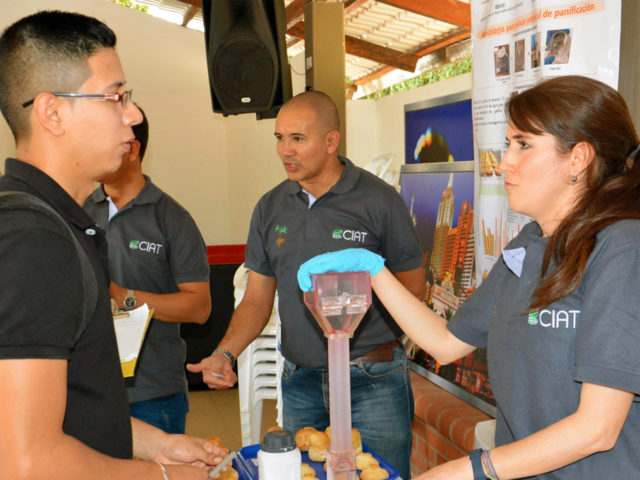As the CGIAR Research Program on Roots, Tubers and Bananas (RTB) kicks off Phase II, the team came together in Dar es Salaam, Tanzania, for an annual review and planning meeting from March 11 – 12.
The meeting built on the momentum from the RTB World Café on Scalable Technologies which took place the day before, and along with updates of progress, focused on refining the nuts and bolts of collaboration to build effective flagship project and cluster teams.
The event brought together over 80 researchers from across RTB’s five program partner centers – International Potato Center, International Institute of Tropical Agriculture, Bioversity International, International Center for Tropical Agriculture and Centre de Coopération Internationale en Recherche Agronomique pour le Développement (CIRAD) – along with colleagues from other partners including Wageningen University.
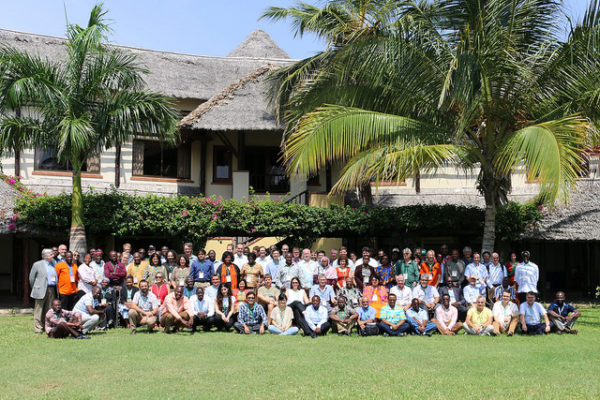
Over 80 participants from RTB partner centers came together for the annual meeting in Dar es Salaam, Tanzania. Photo by H.Holmes/RTB
Graham Thiele, RTB Program Director set the scene with an analysis of strength, weaknesses, opportunities and threats in the program, and some key responses to the address the points identified in the analysis.
“RTB is entering its second phase in a strong position. We had one of the highest rated proposals for Phase II, we have clear impact pathways to reach our targeted outcomes by 2022 and our alliance model means we have cemented, effective partnerships that will be critical to allow us to reach those goals. However, we also have areas to improve upon – The cost and complexity of coordinating such a large-scale program with over 350 partners is a challenge, as is the need to carefully steward our W2 funding and mobilize funding for cross cutting opportunities,” explained Thiele.
“We also need to strengthen flagship leader’s roles in science quality and knowledge management, and cluster leader’s roles in project management, along with maintaining the ‘glue’ of collaboration in cross cutting areas,” he added.
Anne Rietveld shared a program update on gender research, highlighting the successful collaboration with the Gender Responsive Researchers Equipped for Agricultural Transformation (GREAT) project, which provided training to agricultural researchers from sub-Saharan Africa on gender-responsive research for root, tuber and banana crops in 2016.
Claudio Proietti explained the progress of the new Monitoring, Evaluation and Learning (MEL) Platform launched at the end of 2016 as an all-in-one modular platform for improving planning, management, monitoring, evaluation, and reporting.
Holly Holmes presented progress in RTB communications and outreach, including tracking digital analytics and engagement, and highlighting RTB’s interactive 2015 Annual Report website.
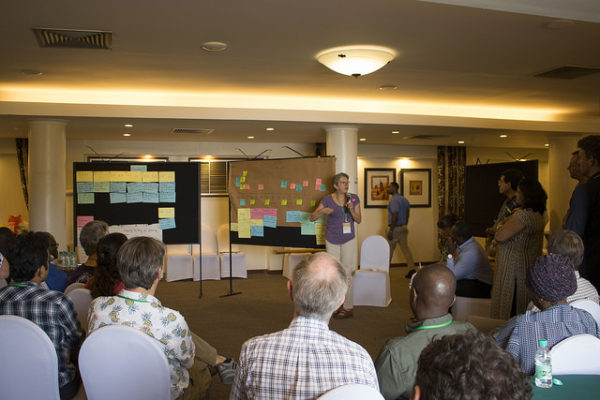
Conny Almekinders (center) of Wageningen University, summarizes key discussion points from the Flagship Project 2 session with the broader group. Photo H.Holmes/RTB
Flagship project leaders held interactive groupwork sessions with their teams, which are ordinarily geographically dispersed. A key output of the lively groupwork was a one-year timeline for each flagship detailing key upcoming events and moments in the project calendar, together with ideas for resource mobilization. As each FP presented their timeline and key discussion points to the broader group, members of other flagships identified areas of synergy and cross-flagship collaboration.
Simon Heck, Flagship Project 4 (FP4) leader, noted that the meeting had helped the team to come together and build some momentum.
“This was the first physical meeting of the FP4 team. We discovered that our different crop research groups are already working towards similar goals – strengthening the consumer focus of our research, supporting innovation that diversifies the use of RTB crops, and finding solutions for managing the perishability and environmental footprint of RTB crops as the food systems become more complex,” Heck explained.
“The session gave us a sense of common purpose, and greater confidence that, by working together in the flagship, we can address these large questions more effectively and realistically. As an immediate next step, scientists from all partners and clusters are now contributing to a compelling cross-cutting research agenda for the flagship and are committing to joint research proposals on some key research issues affecting several RTB crops. It was a real energizer for FP4 and many of us will meet again in June to produce the first set of joint outputs,” he added.
Other participants divided into small groups to discuss practical guidance and next steps on the following areas:
- Coordination and communication of, and between, clusters
- Strategic Innovation fund
- Monitoring and Evaluation
- Big Data Platform
- Excellence in Breeding Platform
The outputs of these discussions can be found in the annual meeting report.
In order to improve the lives of millions of men and women who depend on root, tuber and banana crops by 2022, it’s essential to ensure we have the nuts and bolts in place for an effective program team. To this end, the RTB Annual Review and Planning Meeting helped to solidify new flagship and cluster teams, and position the group for a strong start to Phase II.
For more detailed information about the meeting, please see the RTB Annual Review and Planning Meeting Report.
